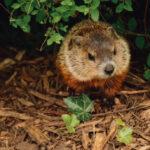The Mojave Desert, a land of stark beauty and surprising vitality, captivates visitors with its seemingly endless vistas and tranquil solitude. While it may appear desolate at first glance, this iconic landscape is brimming with life and activity, playing a crucial role both ecologically and for human endeavors. Understanding the location of this remarkable desert is the first step to appreciating its significance.
The Mojave Desert is primarily located in the southwestern United States, predominantly within southeastern California and southern Nevada. It also stretches into parts of Utah and Arizona. To be more precise, it is nestled between the Great Basin Desert to the north and the Sonoran Desert to the south. Its boundaries are roughly defined by the Tehachapi Mountains to the west, the Colorado River to the east, and the Sierra Nevada and Great Basin deserts to the north. This unique geographical position makes it a transitional zone with a blend of characteristics from neighboring ecosystems.
Within this expansive area, the Mojave Desert encompasses some of the most dramatic and well-known landscapes in North America. It is home to Death Valley National Park, the hottest, driest, and lowest national park, famed for its extreme temperatures and surreal landscapes. Joshua Tree National Park, another jewel of the Mojave, showcases the iconic Joshua trees and unique rock formations. Furthermore, the Mojave National Preserve offers vast stretches of undeveloped desert wilderness, providing habitat for a diverse array of plant and animal species adapted to the arid conditions.
The Mojave Desert’s location is not just geographically significant but also ecologically vital. Despite its harsh environment, it supports a remarkable variety of flora and fauna. From the resilient creosote bush and various cacti to the desert tortoise and bighorn sheep, life has found a way to thrive in this extreme environment. These unique species and ecosystems are increasingly recognized for their intrinsic value and the need for careful conservation.
Beyond its natural wonders, the Mojave Desert is also important for human activities. It has long been a resource for mining, ranching, and agriculture in certain areas. More recently, it has become a focal point for renewable energy development, with solar and wind farms taking advantage of the abundant sunshine and wind. This development, however, needs to be carefully balanced with the preservation of the desert’s delicate ecosystems.
In conclusion, the Mojave Desert is located in the southwestern United States, primarily in California and Nevada, with extensions into Utah and Arizona. Its precise location places it at a crucial ecological crossroads, making it a unique and valuable environment. Understanding where the Mojave Desert is situated is key to appreciating its landscapes, biodiversity, and the ongoing efforts to ensure its sustainable future amidst growing human demands and environmental challenges.

